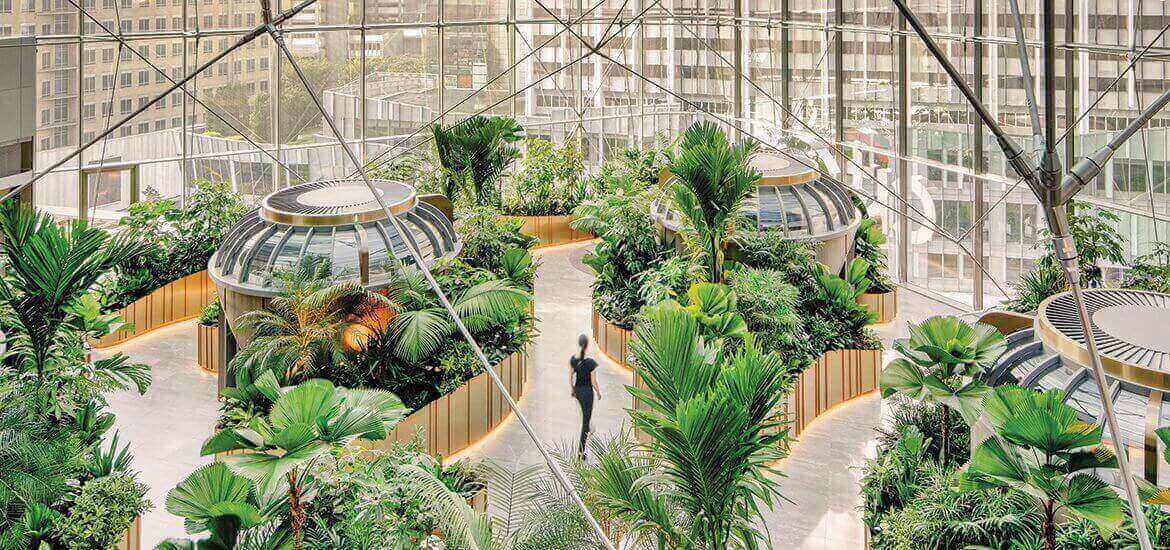
Biophilic Design: Bridging Nature and Built Environment for Human Well-being
|
|
Time to read 2 min

Discover new arrivals in modern lighting, home decor, and Scandinavian design—updated weekly...
|
|
Time to read 2 min
Introduction
Biophilic design is an innovative architectural and interior design approach that seeks to connect people with nature through the integration of natural elements and systems in the built environment. As a powerful solution to address the growing disconnection between humans and the natural world, biophilic design holds the potential to improve mental and physical well-being, increase productivity, and foster sustainable living. This didactic and SEO-optimized article explores the principles, benefits, and key examples of biophilic design, as well as references to further explore this transformative movement.
Biophilic design stems from the biophilia hypothesis, proposed by renowned biologist Edward O. Wilson, suggesting that humans possess an innate affinity for nature and other living organisms. This design philosophy embraces the integration of natural elements such as light, air, water, and greenery into architectural spaces, promoting a sense of harmony, comfort, and connection with the natural world.
Biophilic design encompasses various principles that guide its implementation. Some of the key principles include:
Nature-Inspired Forms and Patterns: Incorporating elements inspired by nature, such as fractals, spirals, and organic shapes, to create visually appealing and soothing spaces.
Natural Light and Ventilation: Maximizing access to natural light and ventilation to enhance well-being and reduce reliance on artificial lighting and air conditioning.
Living Green Walls and Rooftops: Introducing living green walls and rooftop gardens to enhance indoor air quality and create a calming, natural environment.
Water Features: Incorporating water features, such as indoor fountains or cascades, to mimic the soothing sounds of nature and promote relaxation.
Biophilic Materials: Utilizing natural and sustainable materials like wood, stone, and bamboo, to create a sensory connection to the environment.
The incorporation of biophilic design principles has been shown to offer numerous benefits for occupants and the environment. Some of the key advantages include:
Enhanced Well-being: Exposure to nature and natural elements in the built environment has been linked to reduced stress, improved cognitive function, and increased creativity.
Increased Productivity: Studies have shown that biophilic workplaces can lead to higher employee satisfaction, increased focus, and productivity.
Sustainable Living: Biophilic design promotes sustainable practices by reducing energy consumption, enhancing indoor air quality, and fostering a connection to nature, encouraging individuals to be more mindful of their ecological footprint.
Several iconic buildings and interior spaces around the world showcase the successful integration of biophilic design principles:
The Amazon Spheres in Seattle, USA: An office space featuring large glass domes filled with lush greenery, providing employees with a unique and immersive natural environment.
Singapore's Jewel Changi Airport: This remarkable airport features the "Forest Valley," a four-story indoor garden that includes the world's tallest indoor waterfall, offering passengers a tranquil and nature-filled experience.
For further exploration of biophilic design and its impact, consider these valuable resources:
Books:
Key Designers and Authors:
Conclusion
Biophilic design stands as a transformative movement that bridges the gap between nature and the built environment, enriching human experiences and fostering a harmonious relationship with the natural world. By embracing the principles of biophilic design, architects and interior designers have the opportunity to create spaces that promote well-being, productivity, and sustainable living. As the world increasingly seeks to reconnect with nature amid rapid urbanization, biophilic design emerges as a beacon of hope, inspiring a more mindful and eco-friendly approach to design and construction.
Like our Magazine? You will like our store even more with all its curated homeware, modern lighting, kitchen utensils and Wall Art. We also recommend that you sign up to our newsletter or follow us on social media to find out about our news article releases, promotions and discount codes.